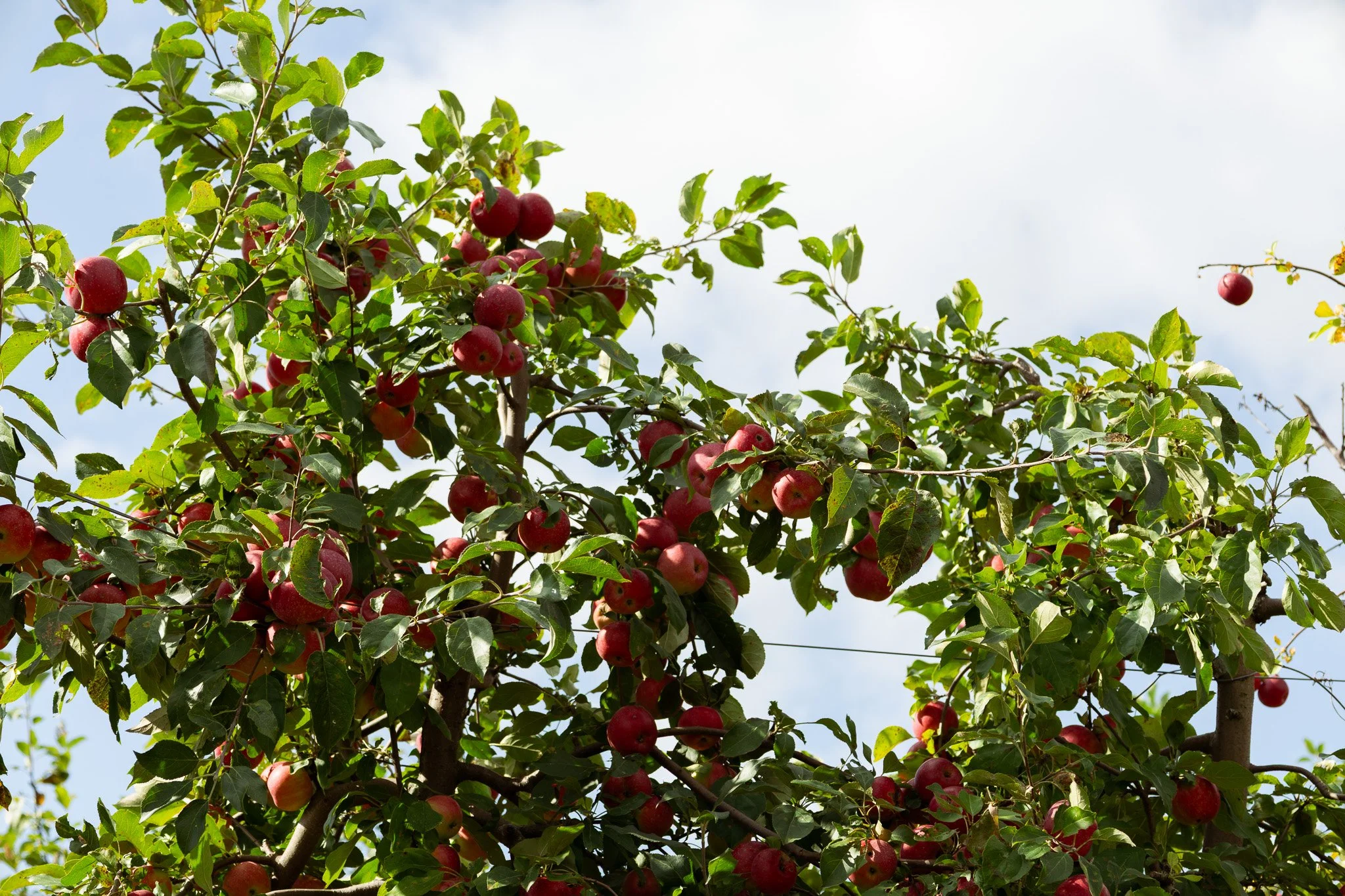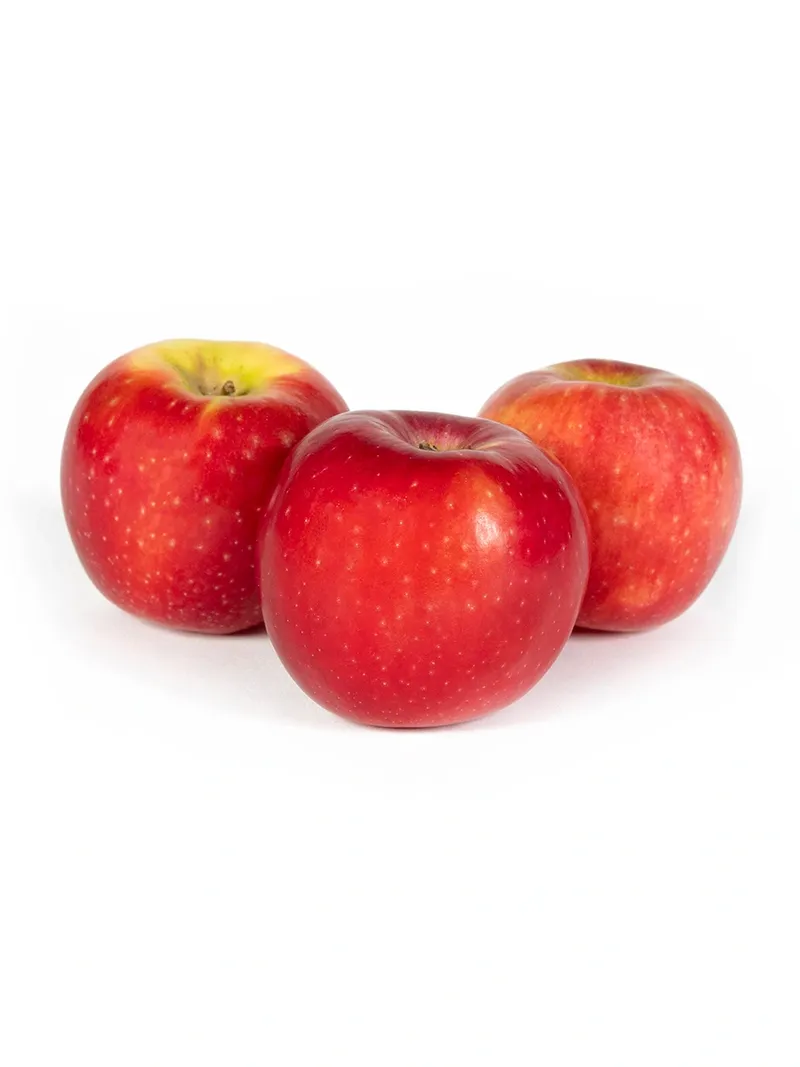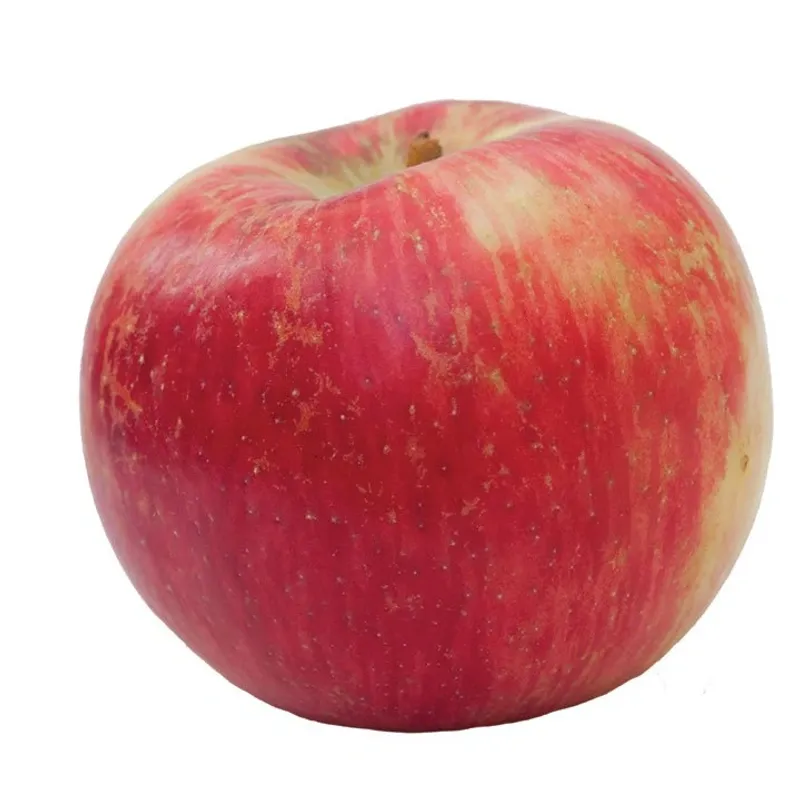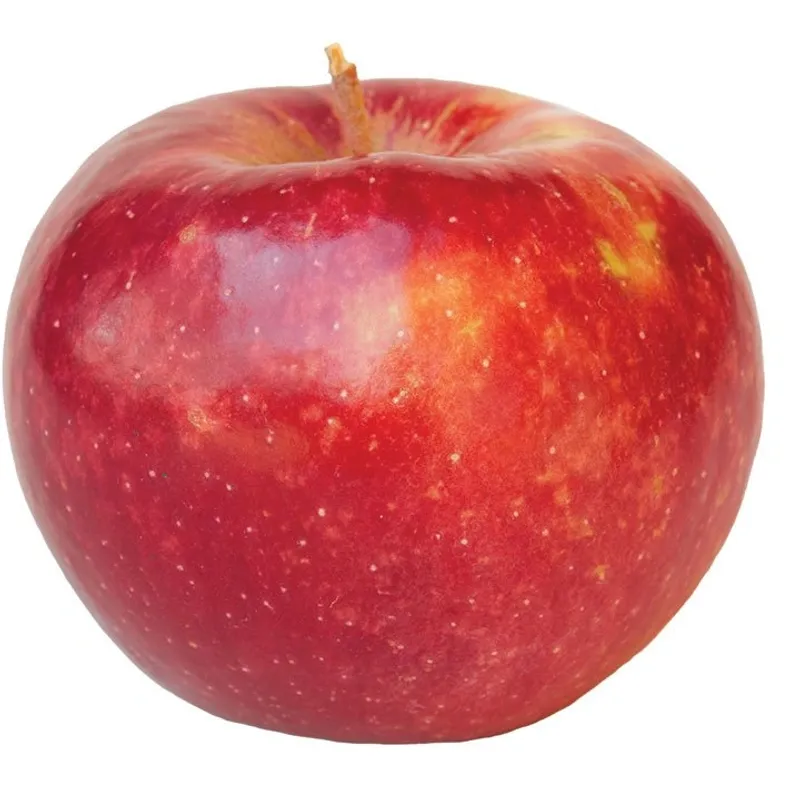Apples We Grow
Our apples are grown with care using organic methods, without harmful chemicals like Glyphosate. Each variety reflects our holistic approach—healthy soil, pollinator-friendly practices, and hand-picked freshness you can taste in every bite
The B-51
Discovered in the 1990s by Chuck Nystrom of Ocheda Orchard in Worthington, MN, this Honeycrisp offspring is now marketed as the SugarBee.
Appearance: Medium-small, bright red with faint white speckles
Flavor & Texture: Very sweet, aromatic, and extra crisp
Season: Late September–early October
Best For: A luxury eating apple—perfect for snacking or baking into a rich apple crisp.
Chestnut
Developed in 1946 by the University of Minnesota from a Malinda-crabapple cross, the Chestnut is a small apple with big character.
Appearance: Small, orange-red-yellow with light russeting
Flavor & Texture: Sweet, subtle, firm, and snappy
Season: September
Storage: Keeps 3–4 months refrigerated
Best For: A standout fall snack—perfect for kids’ lunch boxes or anyone who can’t stop at just one
Cortland
Developed in 1898 at Cornell University and released in 1915, Cortland is a beloved Macintosh offspring.
Appearance: Medium to large, ruby red with faint white speckles
Flavor & Texture: Sweet-tart, crisp at first bite, then soft like a Macintosh
Season: Late September–early October
Storage: Best eaten soon after harvest
Best For: A versatile apple—great for eating, baking, applesauce, cider, and salads (slow to brown when cut)
First Kiss
Developed by the University of Minnesota, this early-season apple is known for its bold flavor and striking color.
Appearance: Bright lipstick red
Flavor & Texture: Semi-tart, slightly sweet, and crisp
Season: Mid-August–early September
Storage: Keeps 3–4 months refrigerated
Best For: A premier fresh-eating apple; also excellent in salads
Frostbite
Developed in the 1920s by the University of Minnesota, this cold-hardy apple is known for its unusual look and intense sweetness. Parent of Keepsake and Sweet 16, and grandparent of Honeycrisp.
Appearance: Small, red to maroon with purple hints
Flavor & Texture: Tangy, very sweet, refreshing, firm, and crisp
Season: Late September–mid October
Storage: Keeps 3–4 months refrigerated
Best For: Excellent for cider, dried apple chips, or snacking for those with a sweet tooth
Haralson
Introduced in 1922 by the University of Minnesota and once the state’s most popular apple, named after Charles Haralson of the UMN Fruit Breeding Program.
Appearance: Red to dark red with maroon tones and faint white speckles
Flavor & Texture: Tart, firm, and complex with white flesh
Season: Late September–early October
Storage: Keeps 1–2 months refrigerated
Best For: A classic tart pie apple; excellent for baking, cooking, and fresh eating
Honeycrisp
Developed in 1991 by the University of Minnesota, Honeycrisp has become one of the most popular apples worldwide and was named Minnesota’s State Apple in 2006. Its true parents were later confirmed as Keepsake and MN 1627.
Appearance: Blush red with yellow undertones
Flavor & Texture: Exceptionally sweet, juicy, and very crisp
Season: Mid-September–early October
Storage: Keeps 4–6 months refrigerated
Best For: A premier fresh-eating apple, also excellent for cooking and baking
Intensity
Developed at Fairhaven Farm in South Haven, MN by David MacGregor, Intensity is a cross between Honeycrisp and Haralson—combining two Minnesota classics.
Appearance: Deep red with white speckles and a heritage look
Flavor & Texture: Sweet, tart, and crisp with bold “intense” flavor
Season: Mid–late September
Storage: Keeps 4–6 months refrigerated
Best For: A standout eating apple for tart lovers, also exceptional for baking and pies
Keepsake
Introduced in 1978 by the University of Minnesota, this heritage-style apple is a cross between Frostbite and Northern Spy.
Appearance: Knobby, red to maroon with a yellow base and mild yellow flesh
Flavor & Texture: Dense, juicy, very sweet—flavor develops with storage, sugarcane-like notes; firm texture
Season: Mid-September–early October
Storage: Lasts 6+ months refrigerated; flavor improves over time
Best For: A distinctive eating apple, also excellent for cooking and cider
KinderKrisp
Developed in 2017 by breeder David MacGregor in South Haven, MN, this child of the Honeycrisp delivers the same sweetness and crunch in a smaller, kid-friendly size.
Appearance: Bright red with faint white speckles
Flavor & Texture: Perfectly sweet and crisp
Season: Early September
Storage: Keeps 1–3 months refrigerated
Best For: A top snacking apple—ideal for kids’ lunch boxes, baking, and cooking (especially apple crisp)
SnowSweet
Introduced in 2006 by the University of Minnesota, SnowSweet is a cold-hardy hybrid of Sharon and Connell Red.
Appearance: Bronze-red with maroon blush over a green-yellow base
Flavor & Texture: Sweet, mildly tart, slightly buttery; firm with snow-white flesh that browns slowly
Season: Mid-October
Storage: Keeps up to 2 months refrigerated
Best For: Excellent for fresh eating, salads, and snack trays; also great for baking and applesauce
Zestar
Introduced in 1999 by the University of Minnesota, Zestar! is a cross between State Fair and MN 1691, and one of the parents of SweeTango.
Appearance: Rosy red with blush highlights; medium to large size
Flavor & Texture: Sweet-tart with brown sugar notes; juicy, light, and crunchy
Season: Late August–early September
Storage: Keeps 2–3 months refrigerated
Best For: A versatile apple—excellent for fresh eating, baking, and applesauce (best sliced with lemon juice to prevent browning)














